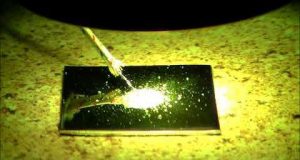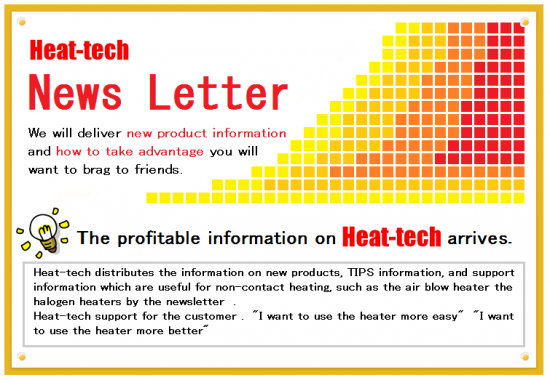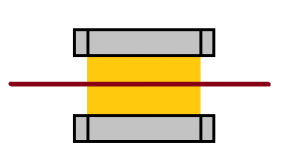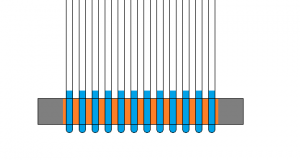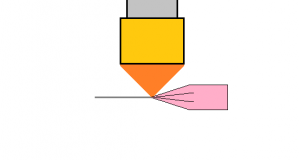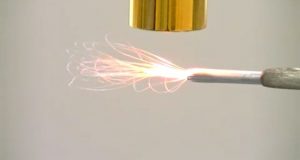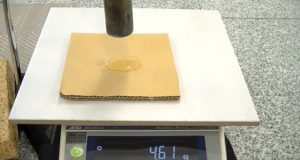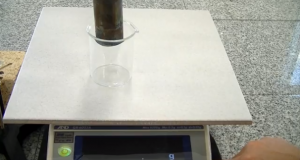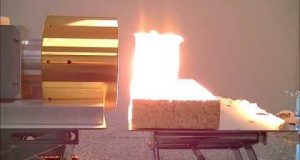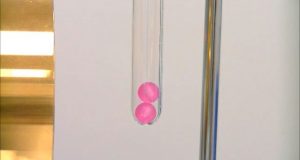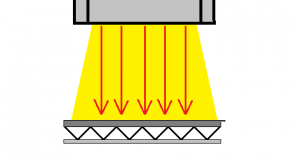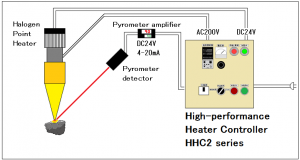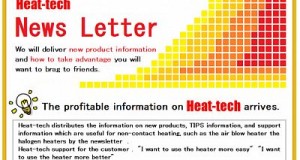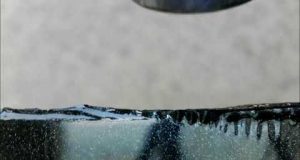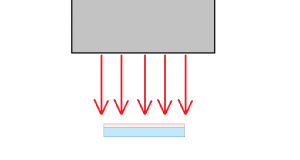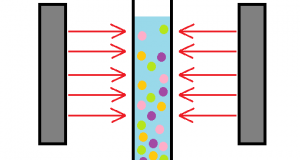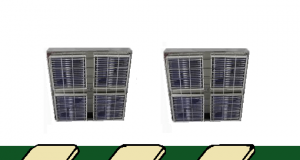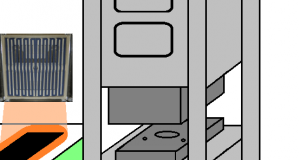This video is a demonstration to powdery brazing filler alloy heating with halogen point heater HPH-60FA/f30/36v-450w. Please check the following site for more information.
Read More »Powdery brazing of an aluminum board and a thermocouple
This video is a demonstration to powdery brazing of an aluminum board and a thermocouple with halogen point heater HPH-60FA/f30/36v-450w. Please check the following site for more information.
Read More »No.3 Heating of glass plate
[ Problem Point ] There was ot a method to heat a part of the glass plate with far infrared rays. [ ⇒Kaizen Point ] Heated using a far infrared ray point heater FLH-35. The glass plate could be heated.
Read More »Heat-tech News Letter – Vol. 023
■□■━━━━━━━━━━━━━━━━━━━━━━━━━━━━━━■ □■ Heat-tech News Letter – Vol. 023 2019-01-15 □■ ■━━━━━━━━━━━━━━━━━━━━━━━━━━━━━━■□■ □ INDEX ■1. Guidance of new applications ■2. Movie Library ■3. Editor’s note ┏━━━━━━━━━━━━━━━━━━━━━━━━━━━━━━━━━┓ ■1. Guidance of the new applications ┗━━━━━━━━━━━━━━━━━━━━━━━━━━━━━━━━━┛ 1-1) 《 Halogen Line Heater Applications No.56 ...
Read More »No.2 Hardening of Teflon coated wire
[ Problem Point ] Teflon resin could not be hardened with general heater. [ ⇒Kaizen Point ] Heated using a far infrared line heater FLH-30. The curing reached well by using far infrared rays.
Read More »No.1 Heating of test tube
[ Problem Point ] There was not a method to heat a part of test tube in far infrared rays. [ ⇒Kaizen Point ] Heated using a far infrared line heater FLH-30. Glass and a liquid were able to heat ...
Read More »No.2 Heat source for the inspection of the fire detector
[ Problem Point ] There was not a method to inspect a fire detector according to a frequency. [ ⇒Kaizen Point ] Heated using a far infrared ray point heater FPH-60. It was able to easily change the frequency of ...
Read More »No.1 Pinpoint heating of resin
[ Problem Point ] There was no compact heater of far infrared which can pinpoint point the resin. [ ⇒Kaizen Point ] Heated using a far infrared ray point heater FPH-30. The welding of the resin got to work gently.
Read More »Heat dissolution of nylon yarn
This video is a demonstration to check the heat dissolution of nylon yarn with halogen point heater HPH-18/f9/12v-40w. Please check the following site for more information.
Read More »Evaporation of water on cardboard sheet
*Check Video is here This video is Evaporation of water on cardboard sheet by a Air Blow Heater. Please check the following site for more information.
Read More »Evaporation of beaker’s water
*Check Video is here This video is Evaporation of beaker’s water by a Air Blow Heater. Please check the following site for more information.
Read More »A burning of a paper in a beaker
This video is a demonstration to burning of a paper in a beaker with halogen point heater HPH-120A/f45/200V-1kW. Please check the following site for more information.
Read More »Heat dissolution of acrylic beads
This video is a demonstration to check the heat dissolution of acrylic beads with halogen point heater HPH-120A/f45/200V-1kW. Please check the following site for more information.
Read More »No.56 Heating of high temperature insulation material
[ Problem Point ] The creep characteristic of the high temperature heat insulating material could not be grasped. [ ⇒Kaizen Point ] And heated at high temperature using a halogen line heater. Since it can be heated to any temperature ...
Read More »Heat-tech News Letter – Vol. 022
■□■━━━━━━━━━━━━━━━━━━━━━━━━━━━━━━■ □■ Heat-tech News Letter – Vol. 022 2018-10-15 □■ ■━━━━━━━━━━━━━━━━━━━━━━━━━━━━━━■□■ □ INDEX ■1. Guidance of new applications ■2. Editor’s note ┏━━━━━━━━━━━━━━━━━━━━━━━━━━━━━━━━━┓ ■1. Guidance of the new applications ┗━━━━━━━━━━━━━━━━━━━━━━━━━━━━━━━━━┛ 2-1) 《 Halogen Point Heater Applications No.38 》 Experimental study ...
Read More »No.55 Heating of microwave absorbing composite
[ Problem Point ] Microwave absorption characteristics of composite materials under high temperature environments could not be grasped. [ ⇒Kaizen Point ] Heated at high temperature using a halogen line heater. Since it can be heated to an arbitrary temperature ...
Read More »No.38 Experimental study on high temperature dynamic characteristics of rocks
[ Problem Point ] The creep characteristics of sedimentary soft rocks at high temperatures could not be grasped. [ ⇒Kaizen Point ] And heated at high temperature using a halogen point heater. Since it can be heated to any temperature ...
Read More »Heat-tech News Letter – Vol. 021
■□■━━━━━━━━━━━━━━━━━━━━━━━━━━━━━━■ □■ Heat-tech News Letter – Vol. 021 2018-07-15 □■ ■━━━━━━━━━━━━━━━━━━━━━━━━━━━━━━■□■ □ INDEX ■1. Guidance of the new product ■2. Guidance of new applications ■3. Movie Library ■4. Editor’s note ┏━━━━━━━━━━━━━━━━━━━━━━━━━━━━━━━━━┓ ■1. Guidance of the new product ┗━━━━━━━━━━━━━━━━━━━━━━━━━━━━━━━━━┛ 1-1) ...
Read More »Edge heating of a HDPE plate by Air Blow Heater
*Check Video is here This video is Edge heating of a HDPE plate by a Air Blow Heater. Please check the following site for more information.
Read More »Deburring of a HDPE bumper
*Check Video is here This video is a Deburring of a HDPE bumper by the Air Blow Heater. Please check the following site for more information.
Read More »No.20 Promotion of plastic polymerization
[ Problem Point ] We were looking for a heater that can heat steadily without contact. [ ⇒Kaizen Point ] Heated with far infrared panel heater PHX. Since temperature control can be done in increments of 1℃, the optimum conditions ...
Read More »No.19 Heat synthesis of proteins
[ Problem Point ] We were looking for a heater that can heat steadily without contact. [ ⇒Kaizen Point ] Heated with far infrared panel heater PHX. Since temperature control can be done in increments of 1℃, the optimum conditions ...
Read More »No.18 Heating of wool
[ Problem Point ] We were looking for a heater that can heat steadily without contact. [ ⇒Kaizen Point ] Heated with far infrared panel heater PHX. Since PHX is a panel heater, PHX is able to heat the whole ...
Read More »No.17 Preheating of prepreg
[ Problem Point ] There was no heater which can heat the entire body uniformly. [ ⇒Kaizen Point ] Heated with far infrared panel heater PHX. Since PHX is a panel heater, PHX is able to heat the whole uniformly.
Read More »No.16 Multistage heating of tire
[ Problem Point ] We needed a heater with good responsiveness capable of multistage heating. [ ⇒Kaizen Point ] Heating with a momentary temperature rise far-infrared panel heater PHX. Since it can follow chemical changes, PHX was able to do ...
Read More » HEAT-TECH Best Technology Online Shop
HEAT-TECH Best Technology Online Shop 

